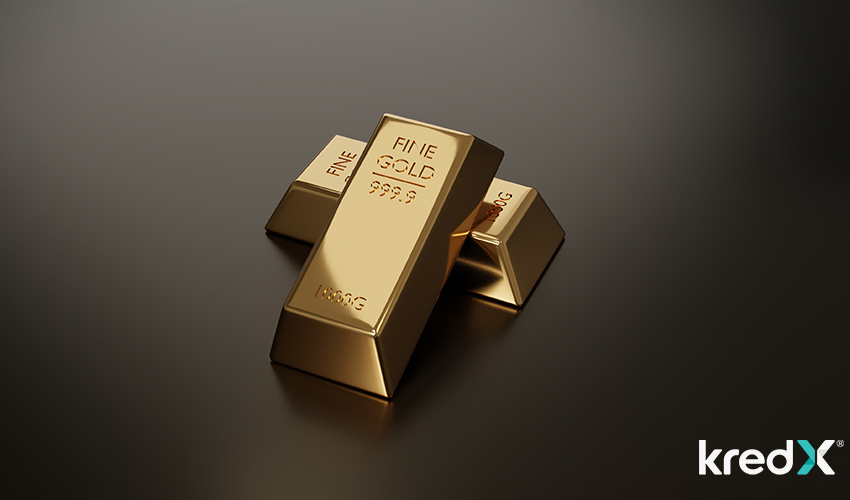
Benefits Of Buying Sovereign Gold Bonds In The Secondary Gold Market
Amid market volatility and economic downturns, gold has always been able to hedge against inflation. Over time, the price of gold has always followed the y-axis of the graph; hence its asset appreciation quality in the long-term compelled investors to put it on the investment group. Further, by investing in gold, one can diversify the portfolio and ensure other factors like liquidity and tax benefit.
While previously, investment in physical gold has been the prime mode, now there are several ways through which investors can invest in gold. Sovereign Gold Bond is one such investment option. As per the RBI, Sovereign Gold Bonds are Government securities that are denominated in grams of gold. These are substitutes for holding physical gold. Here, investors have to pay an issue price in cash, and they can redeem bonds in cash after maturity. If you don’t know how to buy sovereign gold bond schemes, the Reserve Bank of India issues these bonds.
This piece will help potential investors understand what is sovereign gold bond, the benefits of buying Sovereign Gold Bonds via the secondary market. Stay tuned!
What are Sovereign Gold Bonds?
Sovereign gold bonds have gained popularity among investors in recent years as a unique investment option that combines the security of government bonds with the allure of gold. In this article, we will explore the concept of sovereign gold bonds, how they work, their benefits, eligibility criteria, application process, and associated risks. So, let’s dive in and understand everything you need to know about sovereign gold bonds.
Key Factors to Evaluate When Purchasing SGBs from the Primary Market
When considering an investment in Sovereign Gold Bonds (SGBs) from the primary market, several essential factors merit careful evaluation.
1. Issue Price
Understand the issue price determined by the government, which is based on prevailing gold prices. This will impact your entry point and potential returns.
2. Interest Rate
Take note of the fixed interest rate offered on SGBs. This annual interest is payable semi-annually and provides an additional benefit beyond gold price appreciation.
3. Tenure
Assess the bond’s tenure, as SGBs have a fixed maturity period. This will influence your investment horizon and future financial planning.
4. Liquidity
While SGBs are tradable on stock exchanges, market liquidity can vary. Consider your ability to liquidate the investment when needed.
5. Tax Implications
Understand the tax treatment of SGBs, including capital gains tax and tax on interest income, which may impact your overall returns.
6. Redemption
Be aware of the redemption process at maturity. SGBs are redeemed at the prevailing gold prices, which could be higher or lower than the purchase price.
7. Secondary Market
Evaluate the possibility of trading SGBs on the secondary market, as this can impact the ease of exit and price realization.
8. Gold Exposure
Determine the percentage of your investment portfolio allocated to gold and ensure it aligns with your overall investment strategy.
9. Issuer Credibility
Recognize that SGBs are backed by the government, providing a high level of security compared to other gold investment options.
10. Market Conditions
Analyze the current and anticipated market conditions, as they can influence the attractiveness of gold investments and potential returns.
Prior to investing, it’s advisable to conduct thorough research, consult financial advisors, and align your decision with your investment goals and risk tolerance.
How to Find the Best SGB Deal in the Secondary Market?
Sovereign Gold Bonds (SGBs) are actively traded on renowned stock exchanges like BSE and NSE. Consistently keeping an eye on SGB prices offers valuable insights into prevailing market rates and available discounts.
At present, a total of 63 SGBs are listed on these stock exchanges, enabling comprehensive price tracking.
When acquiring SGBs from the secondary market, a crucial factor to consider is the interest component. SGBs offer a straightforward interest rate of 2.5% every six months. It’s essential to note that this interest is calculated on the issue price (face value) of the bonds, not based on the secondary market purchase price. Consequently, while pursuing SGBs from the secondary market, prioritizing the lowest trading price alone may not necessarily yield the optimal outcome.
Disadvantages of Buying SGB in Secondary Market
While buying Sovereign Gold Bonds (SGBs) from the secondary market can offer advantages, it’s important to note potential downsides. These include higher prices than the issue price, leading to potential returns impact, and the possibility of missing out on fixed interest payments if bought above face value. Market volatility, liquidity issues, and bid-ask spreads can also affect secondary market purchases. Careful consideration of these factors is crucial to making an informed investment decision.
Sovereign Gold Bond 2023: Offering Price and Discount
The Sovereign Gold Bond 2023 presents investors with a unique opportunity by offering a definitive price and attractive discounts. This edition of SGB 2023 is a strategic financial instrument that combines the inherent value of gold with fixed interest returns. Investors in Sovereign Gold Bond 2023 can capitalize on the offered price and benefit from discounts, making it an enticing prospect for those seeking to diversify their portfolio. Investors can secure their financial future with the combined advantage of gold and a fixed rate of interest.
Buying Sovereign Gold Bonds Through The Secondary Gold Market
When a company issues security for the first time, they offer it to the public in the primary market. After that, when the Initial Public Offering is completed and stock is listed, these securities become available in the secondary market and can be traded in the same.
The first process is direct, as investors can get securities directly from the issuing company through IPOs. On the other hand, investors can purchase securities from other investors willing to sell the same.
Sovereign Gold Bond was first introduced in the market in November 2015 and had been sold in 56 tranches. These bonds are listed and traded, especially in the cash division of BSE and NSE. Retail investors have the opportunity to purchase and sell Sovereign Gold Bonds from the secondary market.
Note: Buying prices of all these tranches (as of Friday closing) are lower than the issue price of fresh series. This is because sellers wish to receive a discount in return while exiting from the instrument.
So, it is clear that investors can purchase from secondary markets through their demat and trading accounts. The RBI issues tranches throughout the year. So, investors who have missed the opportunity of buying a particular tranche will have to wait for the next issue. Further, they can avail significant benefits by purchasing from the stock exchange, i.e. secondary gold market. However, do not forget to assess certain factors as well.
Benefits Of Purchasing A Sovereign Gold Bond From The Secondary Gold Market
Here is a list of benefits that investors can avail themselves of by purchasing Sovereign Gold Bond from the secondary market. Further, the factors investors need to consider are also explained below-
Liquidity Factor
Investors know that liquidity plays a crucial role in the secondary market. They cannot randomly buy the Sovereign Gold Bond series. The series must have a high liquidity quotient to align with investors’ demands. Sugandha Sachdeva, VP – Currency & Commodity Research, Religare Broking, says, “If we look at the top traded issues, the average daily volume is around 5,000 grams”.
Interest Factor
Investors must know that Sovereign Gold Bond provides 2.5% interest twice a year. Investors receive this interest on the issue price of a specific series and not on the purchasing price in the secondary market. Hence, investors must not settle for the lowest trading price when purchasing from the secondary market. Alternatively, they must assess the issue price. The buying price must be lower than the issue price.
The ideal scenario would be selecting from available Sovereign Gold Bond tranches from the secondary market after evaluating the liquidity factors and purchasing at a discount rate.
It would be better to buy top traded series; hence redemption would be hassle-free without high volume constraints.
For instance, the purchasing price of the top liquid series, SGBAUG28V, after discount is Rs 4,775 from Rs 5,334 per unit. If investors tally it with fresh series initiated on a particular day, the SGBAUG28V series will offer a reduced purchasing price per unit. Additionally, it will provide a higher interest component. The SGBAUG28V series will mature a year earlier also. No wonder SGBMAY29I and SGBJUL28IV seem attractive and lucrative.
However, one must be careful about choosing SGBMAY28 as it may not prove to be a perfect choice. Wondering why?
The issuing price, in this case, is downwards than the purchasing price. While investors will avail units at much-reduced prices (e.g. ₹4,689.99 per unit) when compared to the fresh issue priced at ₹4,791, and the assured interest of 2.5% on the investment amount will also reduce. If investors had subscribed to fresh issues, they would have received a higher interest component.
Investors purchasing Sovereign Gold Bonds from the secondary market can increase the overall return by providing a discounted price to the fresh issue.
Taxation
Another significant benefit of buying Sovereign Gold Bonds is tax benefits. If investors sell Sovereign Gold Bonds at maturity, i.e. after eight years, then they do not have to pay any tax on capital gains. This condition remains the same even when investors purchase Sovereign Gold Bonds from the secondary market for the residual maturity.
According to the Income Tax Act, if investors redeem Sovereign Gold Bonds at maturity, they do not have to pay capital gains. Therefore, it is clear that if investors purchase Sovereign Gold Bonds from the secondary market, they will receive a tax-free treatment at maturity/redemption. This is because sellers have been paying Government taxes for the entire holding period.
Seems confusing? Let us simplify the explanation further. Suppose investors purchase units of a series in the secondary market, i.e., stock exchanges. In that case, it will mature after eight years; hence capital gains on maturity will have the same tax-free treatment.
On the other hand, if investors opt for physical gold, they will have to pay short-term capital gains tax (STCG) as per the investor’s applicable tax slab rate. Further, the long-term capital gains tax is imposed at 20% with indexation.
Return on Sovereign Gold Bonds is market-oriented. Additionally, the return depends on applicable gold prices on maturity (after eight years) or before that. Hence, investors willing to get a higher return can opt for other types of bonds available via online platforms.
Here, investors can select a number of units and invest in the available list of bonds. Further, investors can reap the benefits of the digital process and the assistance of dedicated Relationship Managers.
Bottom Line
The introduction of the sovereign Gold Bond in the investment arena made investing in gold more manageable. While investment is open in both primary and secondary markets, one can notice a low trading volume of Sovereign Gold Bonds in a stock exchange. However, if investors choose to purchase it from the secondary market, they can secure several benefits, such as tax benefits. The benefits multiply when investors purchase a liquid series with a lower trading price than the issue price and a fresh issue.
FAQs
1: Can I purchase sovereign gold bonds from any bank?
No, sovereign gold bonds can be purchased from designated banks, post offices, or recognized stock exchanges during the specified subscription period.
2: How are the interest payments calculated for sovereign gold bonds?
The interest on sovereign gold bonds is calculated on the nominal value of the bonds at a fixed rate of 2.5% per annum. The interest is payable semi-annually.
3: What happens if I want to sell my sovereign gold bonds before maturity?
Sovereign gold bonds can be sold in the secondary market through recognized stock exchanges. However, early redemption may attract capital gains tax liabilities.
4: Are sovereign gold bonds considered a safe investment?
Yes, sovereign gold bonds are considered a safe investment as they are issued by the Government of India and come with a sovereign guarantee.
5: Can I avail a loan against sovereign gold bonds?
Yes, sovereign gold bonds can be used as collateral to avail loans from banks and other financial institutions, subject to their terms and conditions.
6. Will I get interest if I buy SGB from the secondary market?
No, if you purchase Sovereign Gold Bonds (SGBs) from the secondary market, you will not be eligible to receive any interest. The interest is paid to the original bondholders who subscribed to the SGB issuance during its primary offering.



